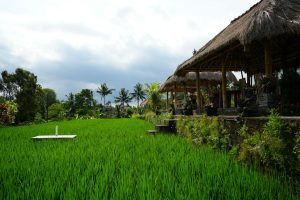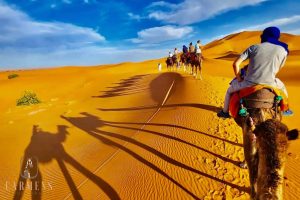In terms of wildlife, what springs to mind when hearing about “the Big Five”? Most likely large African animals. However, Africa is not the only place where big wild animals live. Think of bears, whales, caribou, moose and bison. These animals are very different but as awe-inspiring as their African counterparts and are found on the other side of the world – they are Canada’s “Big Five”. Learn more about these iconic animals and where to get the best chance of having a close encounter with them – if you dare.
Bears
Of all the outdoor activities that Canada has to offer, bear watching is one of the best and most rewarding experiences. Canada is home to three species of bears: the grizzly bears, black bears and polar bears. The grizzly, with its shaggy coat and giant paws, is arguably the most iconic of all bears and sure to draw a crowd. Who doesn’t want to hear the roar of a grizzly in the wild?
To guarantee your chance of spotting one, travel to the British Columbia coast in autumn during the salmon run, an annual event when the bears feast on wild salmon as the fish return to their spawning grounds. Watch the spectacle of grizzlies catching an easy meal from the safety of a guided boat.
The most common bear in Canada is the black bear, which can be found all over the country. They are more tolerant of people than the grizzly bear and often live in forests near human settlements. They are excellent climbers so make sure to look up when you are on the lookout for black bears in the forest.
Polar bears have two thirds of its population in Canada and the best place to spot them in the wild is in Churchill – a town on the fringes of the Arctic where residents live alongside polar bears. During bear season it is not uncommon to see the largest land carnivores roam the streets. Which is why residents are known to leave their doors and windows unlocked should a quick escape be necessary.
Whales
Many of us dream of hearing the magical song of a whale out on the open sea. There is nothing more enchanting than witnessing these majestic and mysterious underwater creatures emerge from the depths of the sea.

With over 33 species of whale living in its oceans, Canada is one of the best places on Earth to see these giant marine mammals when joining any of the whale watch tours. Prime time for this is May to October, when trips are offered in boats of all sizes from small sailing boats to luxury cruisers. You can even get up close and personal to orcas from your very own kayak.
During spring, most whales migrate north after having spent the Canadian winter in warm southern waters. This is also where the calves are born. As the whales migrate north again, many choose to stay in the Canadian waters all summer, due to the abundance of food there. Venture out on one of the many boat tours and be guaranteed an experience that will stay with you for the rest of your life.
Caribou
Did you know that the caribou is such a national symbol in Canada that it has been featured on the 25 cent piece for decades? Also known as reindeer in Europe, it has tall and flat antlers and while it is not as big as the moose, the stately caribou is among one of the most recognisable animals in Canada.

During the summer months, herds of caribou migrate north to the tundra (some more than 600 miles!) where they feed on the grass and plants. They make their way back south with the first snowfall. Sadly, caribou is the most at risk with some herds having declined by more than 95 per cent.
This is primarily due to climate change which has affected the reliability of their migratory route as well as their ability to access food. A focus on providing habitat for caribou on a long-term basis has been put into place to hopefully safeguard the future of this iconic animal.
Moose
The moose is often considered a symbol of Canada as it can be seen almost in every region, with the exception of Vancouver Island and the Arctic. The largest members of the deer family, called elk in Europe, they are hard to miss with their long, distinctive antlers.

You can often spot them near ponds and lakes in the boreal forest, or foraging for food on the side of the road in the Canadian Rockies. But make sure to stay out of their range of vision and not get too close! While they may seem approachable with their long, friendly faces and slow-paced movements, they can move very fast when threatened. On a fun note, they have sweets named after them: ‘Moose Droppings’ – otherwise known as chocolate-covered almonds. You can buy this treat at many souvenir shops in Canada.
Bison
Meet Canada’s largest land mammal: the bison, also referred to as the buffalo, weighing up to 900 kg (1,985 lbs). Native Americans used the bison for nearly everything to survive both physically and spiritually: food and clothing, shelter, tools and ceremonial implements.

Once there were close to 60 million bison thundering across the prairie from Mexico to Northern Canada. However, throughout the late 1800s numbers were reduced to a mere 300 in just a few decades due to the systematic slaughter by settlers. No other species on Earth has disappeared so quickly.
Thankfully plains bison are making a comeback, with a herd of 31 reintroduced to the remote valleys of Banff National Park in 2018. However, further recovery is limited because grasslands have become one of Canada’s most endangered habitats. These grasslands were shaped by bison when they migrated and grazed their way through them, consequently being lost as bison numbers rapidly declined. You can see a captive herd in Riding Mountain National Park, Manitoba.
Andrew Morten is the Founder of Little America. Little America creates bespoke, tailored trips to the United States and Canada.
If you would like to be a guest blogger on A Luxury Travel Blog in order to raise your profile, please contact us.





